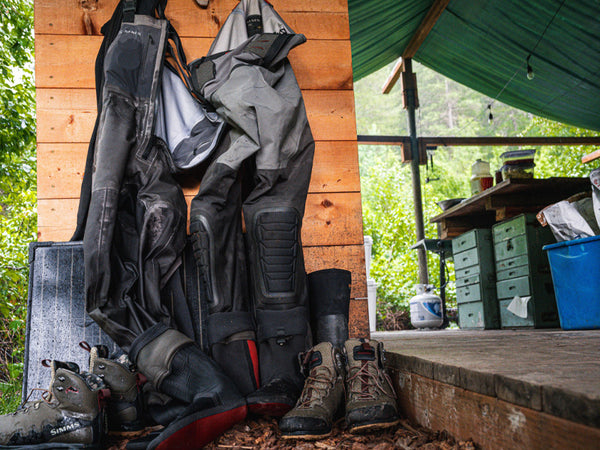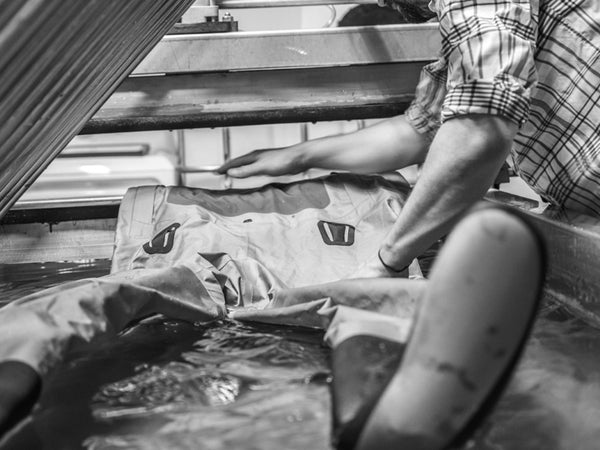Free Shipping On Orders $100+
Stay toasty on hardwater this winter with layers and insulation.

Always put your waders on using a protective mat to shield the neoprene feet from rocks. Simms makes a variety of storage bags with a built in changing mat for ease of use.

Waders should be dried after each use, both inside and out. When you get home, you can hang your waders to dry thoroughly. Note that exposure to salt water requires special care.

Regular washing helps maintain the waterproof, breathability of your waders. Depending on the number of days used, annual, bi-annual or tri-annual washing is recommended.
Waders are meant to be used but there will be times that they're stored away. During these durations, there are a few guidelines to follow:
Getting your waders to and from your favorite angling spot is important.
Gore-Tex and other technical fabrics will be at peak performance when kept clean and free from dirt, sunscreen, oils from skin and perspiration.
Technical fabrics should be washed in warm water (100 degrees) using a detergent that is free from bleach and fabric softener. Both powdered and liquid detergents work fine. A performance tech wash, such as Nikwax can also be used. With the exception of Simms Waders, technical fabrics can be placed in a dryer. For best results, tumble dry on a warm setting for ten-minute intervals. The warmth of the dryer can also renew the DWR (durable water repellent) treatment on the fabric. This causes water to bead up and run off the fabric.
Use a washing machine without an agitator or hand wash. Use cold water and normal detergent that does not contain bleach. Once you have washed the waders make sure you dry them properly. Start by turning the waders inside out and hang dry. Once dry, flip them right side out to complete the process. Never put your waders in the dryer, the heat will adversely affect the seam tape on your waders and will void your warranty.
Wader Washing Recommendation: Take the wading belt off and zip the suspenders into front pocket prior to washing waders. Make sure to zip all pockets.
If water does not bead off the fabric, it may be time to consider reapplying a DWR treatment. We recommend Nikwax products for both waders and other technical outerwear pieces. Please note, many of these products recommend using a dryer which is fine for everything except waders.
WADERS-PINHOLE LEAK REPAIR
While one single pinhole may not cause a noticeable leak, left unrepaired, more pinholes can form causing a larger issue. Regular inspection and preventative maintenance should be performed.
WADER STRAP DIVIDER
PATCHING WADERS
ZIPPER REPAIR
REPAIRING WADERS: BOA LACING SYSTEM REPAIR
Cart
Your cart is empty
From waders to tackle, we have all the gear to make your fishing trips unforgettable.
Cart (0)